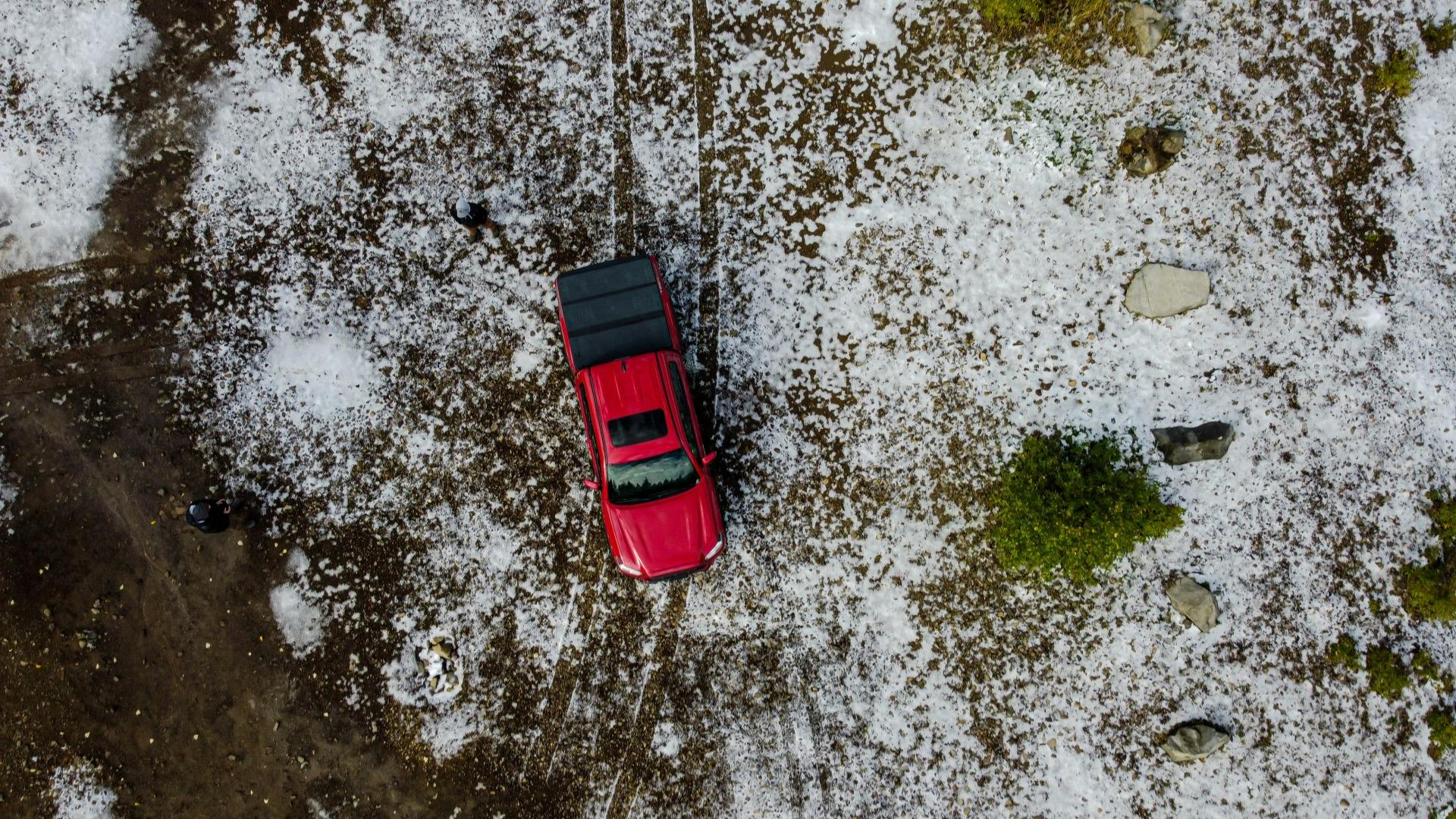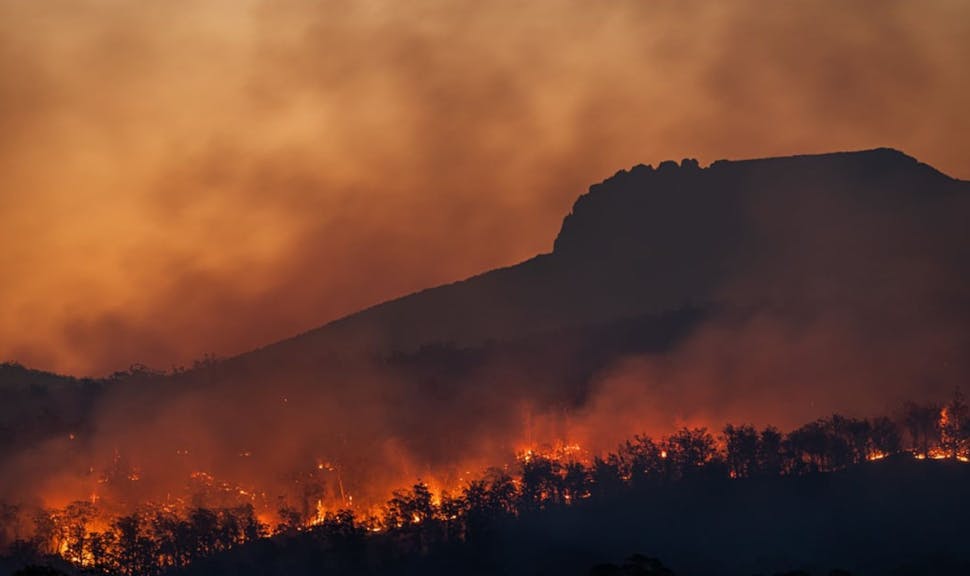

Francis RowClaims Manager for Property and Construction, AXA XL, Australia
November 1, 2021
Hail Damage Playbook: Facilitating fast, effective response and recovery
Responding to the prospect of more frequent and severe hailstorms, AXA XL in Australia developed a Hail Damage Playbook detailing best practices for facilitating fast, effective response and recovery efforts after damaging hailstorms. Francis Row, AXA XL's Claims Manager for Property and Construction in Australia, has the details.
6 minutes
Original Content : AXA XL
In a previous Fast Fast Forward article, my colleague Terry Behan noted, Hailstorms are complex meteorological events, and the way they develop, advance and dissipate varies according to multiple factors, including location. This complexity and variability also make hailstorms hard to predict and challenging to prepare for
.
Hailstorms can also be highly destructive and costly. For instance, a series of intense hailstorms struck parts of Australia in April 2020 and again in October 2021; the former caused an estimated AUD 1.4 billion (USD 1.0 billion) in insured losses; the impacts of the latter are still being tallied.
What produces these losses? For building owners, the most common scenarios include:
- Damage to roofs;
- Internal water damage when the water tightness of the structure is compromised—that occurs when hail blockages create ponding, cause gutters to overflow or, in extreme cases, result in roof collapse;
- Damage to roof-mounted equipment such as solar energy panels, antennas and heating/cooling systems—the fin coils of air conditioning equipment are particularly susceptible to hailstones; and
- The destruction of high-value equipment and materials located beneath windows/skylights smashed by hail.
There often are few, if any, practical options for eliminating or lessening hail risk. While building owners can install steel mesh guards to protect heating/cooling equipment, retrofitting drainage systems or replacing roofs with more hail-resistant materials generally isn't feasible.
Finally, the limited evidence suggests a worrisome trend. (The small scale and relative rarity of hailstorms make the subject hard to research.) According to a peer-reviewed article from February 2021 in the journal Nature:
Observations and modelling lead to the general expectation that hailstorm frequency will increase in Australia and Europe, but decrease in East Asia and North America, while hail severity will increase in most regions
.
In summary, building owners in Australia's most hail-prone regions—including densely populated parts of New South Wales, Victoria and Queensland—have limited options for avoiding or minimising this escalating threat.
Time = money (and stress)
If little can be done pre-event, what about the post-event recovery process?
The recovery process following a natural disaster typically includes assessing the damage; determining/agreeing on the scope of work to be done; developing/issuing tenders; soliciting/evaluating tender offers; negotiating/agreeing on the terms and conditions with selected contractors; and, finally, carrying out the needed repairs/reconstruction.
Given all these steps, it is often six to eight weeks before the physical work starts. And that is under the best circumstances. If the damage is extensive, involves complex machinery/equipment, and/or the site is in a sparsely populated area, the timeline could be considerably greater. And, as the process drags on, the direct and indirect costs only go one way: up. Not only do business interruption losses grow steadily over time, but so do the reputational impacts, damage to customer relationships and adverse effects on people.
For example, AXA XL in Australia insures many aged care facilities. These typically sprawling campuses comprise hundreds if not thousands of structures, including single household bungalows, multi-unit residential buildings and medical treatment centres. When a severe hailstorm passes over one of these facilities, the financial losses, as well as the impacts on their vulnerable populations, can be substantial.
The direct financial costs often are considerable for two reasons. First, many structures weren't designed or constructed to withstand the heavy hailstones featured in today's severe hailstorms, so physical damage tends to be extensive. Second, when hailstorms impact nearby areas, the demand for building materials and contractors spikes. Our experience shows that, following a natural disaster, materials and construction costs can be 30-50 percent higher than average, and these costs can escalate even further if a facility is in a rural area where building materials and contractors are scarce to begin with.
The human impacts of hailstorms aren't as quantifiable but are no less significant. Residents whose homes are damaged may need to be relocated, often for extended periods. Routine medical treatments can also be disrupted or suspended. All in all, the recovery process can be highly challenging and stressful for the residents.
Enabling fast, effective response and recovery
These realities—an escalating threat plus the increasing economic and human impacts from prolonged recovery efforts—are what prompted us to develop what we call the Hail Damage Playbook. The Playbook encompasses a series of best practices for facilitating fast, effective response and recovery efforts after damaging hailstorms.
It starts with recognising that the recovery process is a collaborative effort, and that communication and trust are critical. All the relevant stakeholders, such as building owner, insurer(s), broker, loss adjusters and contractors, need to share a common understanding of what the ultimate outcome looks like and how each will work together to achieve that quickly and effectively.
Toward that end, AXA XL collaborated with Crawford, one of our adjusting partners, in developing the Playbook. Their contractor network, Contractor Connection, also plays a vital role in implementing the Playbook's strategies.
How does it work in practise? Instead of the sequential process outlined above, the Playbook aims to accelerate the recovery effort by conducting some activities simultaneously and eliminating others.
When we are notified of a loss, AXA XL's service providers are dispatched to the site as quickly as possible. Along with assessing the losses, one of their first tasks is securing the structures against further impacts. This is essential since heavy hailstones often puncture roofs and the storm systems producing hailstones can linger for several days and generate more heavy rains, high winds and hail.
For this initial assessment, aerial drone inspections and infrared roof scans are conducted to identify specific damage areas across the roof structures; this method is significantly faster compared to on-site, physical assessments and also helps us better prioritise recovery responses. Next, pre-screened and qualified make safe contractors are sent to fortify buildings at risk of additional damage, ensuring they are watertight and can resist wind, rain and hail until permanent repairs can be made, thereby preventing further distress and even more costly repairs. More recently, that often involves applying a polyethylene film produced by an Australian company that heat-shrinks to wrap roofs or structures securely, thus protecting buildings against further water intrusions and making it possible for people to stay in their homes until the repairs start. This innovative approach significantly limits the disruptions to peoples' lives while also yielding considerable cost savings.
Then, instead of all the intermediate steps—i.e., developing/issuing tenders, soliciting bids, evaluating tender offers, etc.—the Playbook employs a managed cost plus
approach. In short, contractors from the Contractors Connection are tasked to go in, start the work right away and charge afterward. Orders issued on a managed cost plus
basis are subject to pre-agreed parameters concerning the profit margins, general scope of work, provisions for undertaking extraordinary repairs and related issues. While we all want to work fast, we also need to work smart. This is also why, as mentioned earlier, communication and trust are essential.
In essence, the Playbook can be described as a collaborative process focussing on speed and efficiency, relying on a set of pre-screened, selected contractors operating on a managed cost plus
basis. Although that description sounds relatively modest, the benefits can be substantial. The cost savings we have realised by following the Playbook in some instances have been considerable. Just as important, the Playbook helps our clients get back in business faster, while also reducing the disruptions on people affected by severe natural disasters. Putting clients and communities impacted by disasters back on track as quickly as possible is just one example of how we make AXA XL’s purpose a reality.
Francis Row is AXA XL's Claims Manager for Property and Construction in Australia and manages a team of highly experienced property claims handlers. He is based in Sydney and can be contacted at francis.row@axaxl.com.
Global Asset Protection Services, LLC, and its affiliates (AXA XL Risk Consulting
) provides risk assessment reports and other loss prevention services, as requested. This document shall not be construed as indicating the existence or availability under any policy of coverage for any particular type of loss or damage. AXA XL Risk. We specifically disclaim any warranty or representation that compliance with any advice or recommendation in any publication will make a facility or operation safe or healthful, or put it in compliance with any standard, code, law, rule or regulation. Save where expressly agreed in writing, AXA XL Risk Consulting and its related and affiliated companies disclaim all liability for loss or damage suffered by any party arising out of or in connection with this publication, including indirect or consequential loss or damage, howsoever arising. Any party who chooses to rely in any way on the contents of this document does so at their own risk.
US- and Canada-Issued Insurance Policies
In the US, the AXA XL insurance companies are: AXA Insurance Company, Catlin Insurance Company, Inc., Greenwich Insurance Company, Indian Harbor Insurance Company, XL Insurance America, Inc., XL Specialty Insurance Company and T.H.E. Insurance Company. In Canada, coverages are underwritten by XL Specialty Insurance Company - Canadian Branch and AXA Insurance Company - Canadian branch. Coverages may also be underwritten by Lloyd’s Syndicate #2003. Coverages underwritten by Lloyd’s Syndicate #2003 are placed on behalf of the member of Syndicate #2003 by Catlin Canada Inc. Lloyd’s ratings are independent of AXA XL.
US domiciled insurance policies can be written by the following AXA XL surplus lines insurers: XL Catlin Insurance Company UK Limited, Syndicates managed by Catlin Underwriting Agencies Limited and Indian Harbor Insurance Company. Enquires from US residents should be directed to a local insurance agent or broker permitted to write business in the relevant state.



